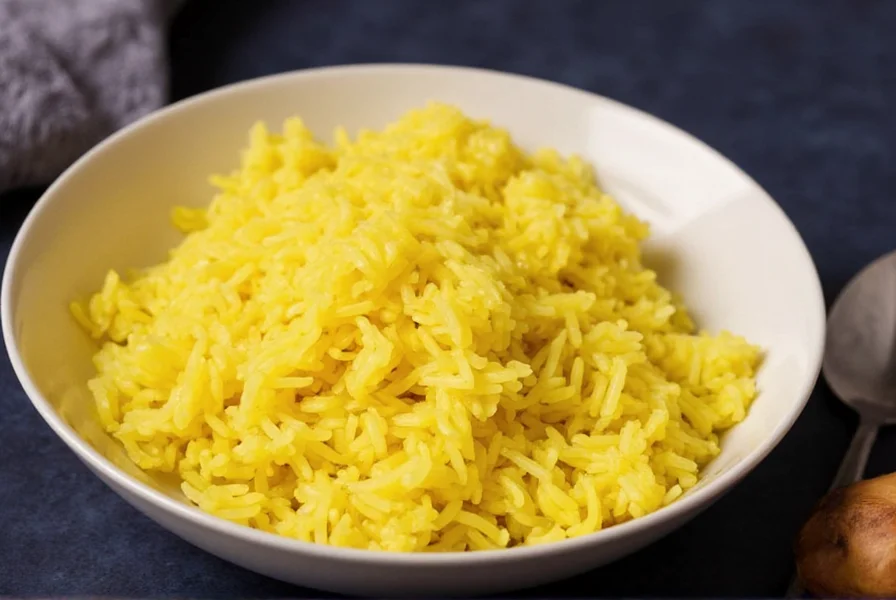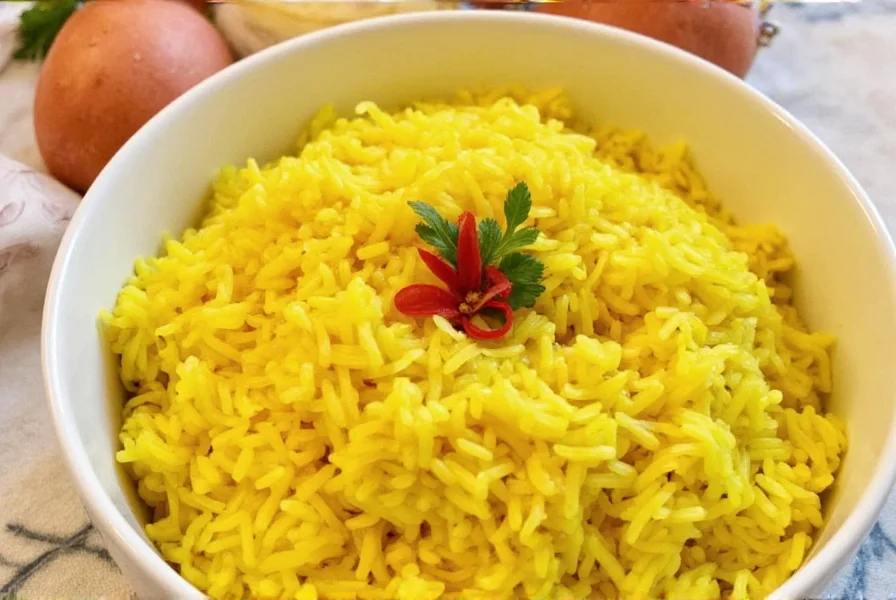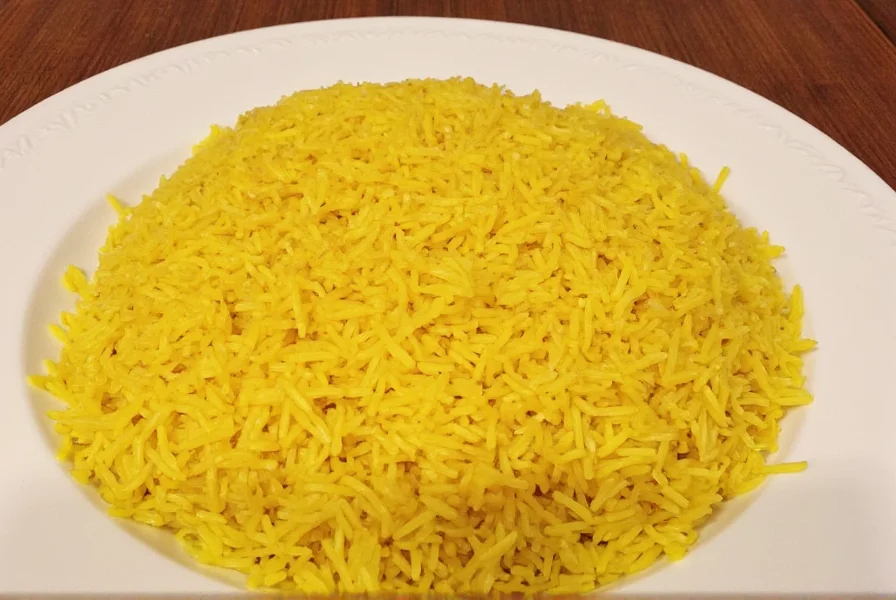If you've ever wondered how to make authentic saffron rice that rivals restaurant quality, you've come to the right place. This comprehensive guide reveals the precise techniques professional chefs use to create perfectly cooked saffron-infused rice with vibrant color and delicate floral notes.
The Cultural Significance of Saffron Rice
Saffron rice appears in culinary traditions worldwide, each with distinctive preparation methods. In Persian cuisine, tahdig (crispy bottom layer) represents the pinnacle of saffron rice mastery. Spanish paella relies on saffron for its characteristic golden hue and earthy flavor. Indian biryanis use saffron to elevate both color and aroma. Understanding these cultural contexts helps you appreciate why proper technique matters in traditional saffron rice preparation.

Essential Ingredients for Perfect Saffron Rice
The quality of your ingredients directly impacts your authentic saffron rice recipe results. Let's examine each component:
| Ingredient | Quality Indicator | Measurement |
|---|---|---|
| Saffron threads | Deep red color, minimal yellow styles | ½ teaspoon (15-20 threads) |
| Basmati rice | Long grains, aged at least 1 year | 2 cups (uncooked) |
| Water or broth | Cold, filtered | 3 cups |
| Salt | Sea salt or kosher salt | 1½ teaspoons |
Proper Saffron Preparation Technique
Many home cooks make the critical mistake of adding saffron directly to rice. For optimal flavor extraction in your easy saffron rice recipe, follow these steps:
- Grind ½ teaspoon saffron threads with 1 teaspoon sugar using a mortar and pestle
- Add 2 tablespoons warm water (160°F/70°C) - never boiling
- Cover and let steep for 20-30 minutes
- Do not skip this blooming process - it activates safranal compounds
Temperature matters significantly. Water above 175°F (80°C) degrades saffron's delicate compounds, while water below 140°F (60°C) won't properly extract the flavor. This precise saffron rice cooking method ensures maximum color and aroma without bitterness.
Step-by-Step Cooking Instructions
Follow this professional technique for perfect results every time:
Rice Preparation
- Rinse 2 cups basmati rice under cold water until water runs clear (5-6 times)
- Soak rice in 3 cups water for 30 minutes - this reduces cooking time and prevents breakage
- Drain thoroughly before cooking
Cooking Process
- Bring 3 cups water to rolling boil with 1½ teaspoons salt
- Add drained rice and boil for 5 minutes (stir once)
- Drain rice immediately when grains reach 70% cooked (al dente)
- Layer rice in heavy-bottomed pot with bloomed saffron mixture
- Cover with tight-fitting lid and cook on lowest heat for 20 minutes
- Let rest 10 minutes before fluffing
Avoiding Common Saffron Rice Mistakes
Even experienced cooks make these critical errors in their homemade saffron rice preparation:
- Using powdered saffron - often adulterated and lacks flavor complexity
- Adding saffron directly to boiling water - degrades delicate compounds
- Overcooking the rice - results in mushy texture and diminished saffron aroma
- Stirring during cooking - breaks rice grains and creates starchiness
- Using incorrect rice variety - short-grain rice becomes too sticky
Variations and Serving Suggestions
Once you've mastered the basic saffron rice recipe, try these authentic variations:
- Persian style: Add 1 tablespoon rose water with saffron for floral complexity
- Spanish variation: Include ½ teaspoon smoked paprika for depth
- Indian preparation: Layer with fried onions and whole spices before steaming
Serve saffron rice with grilled meats, roasted vegetables, or as part of biryani. The golden grains beautifully complement richly colored dishes like lamb curry or roasted beetroot. For special occasions, create a stunning presentation by layering saffron rice with plain rice in alternating stripes.

Storage and Reheating Guidelines
Proper storage maintains your saffron rice dish quality for future meals:
- Cool completely within 2 hours of cooking
- Store in airtight container for up to 3 days
- Freeze in portion-sized containers for up to 2 months
- Reheat with 1 tablespoon water per cup of rice, covered on low heat
- Avoid microwave reheating which creates uneven texture
Never reheat saffron rice more than once, as repeated temperature changes degrade both texture and flavor compounds. The delicate saffron aroma diminishes significantly after multiple reheating cycles.
Frequently Asked Questions
How much saffron should I use for 2 cups of rice?
Use 15-20 premium saffron threads (about ½ teaspoon) for 2 cups of uncooked rice. This provides optimal color and flavor without bitterness. Measure by threads rather than volume since saffron quality varies significantly.
Why does my saffron rice turn bitter?
Bitterness occurs when saffron contacts water above 175°F (80°C), which degrades its compounds. Always use warm (160°F/70°C) water for blooming. Excessive saffron quantity or prolonged cooking can also cause bitterness.
Can I substitute saffron with turmeric for color?
While turmeric provides yellow color, it lacks saffron's distinctive floral aroma and complex flavor profile. Turmeric creates an entirely different dish. For authentic saffron rice, genuine saffron threads are essential - there's no true substitute for its unique characteristics.
How do I prevent my saffron rice from becoming sticky?
Prevent stickiness by rinsing rice until water runs clear, soaking for 30 minutes, and draining thoroughly before cooking. Use the absorption method with precise water ratio (1:1.5 rice to water), and avoid stirring during cooking. Properly aged basmati rice also helps maintain grain separation.











 浙公网安备
33010002000092号
浙公网安备
33010002000092号 浙B2-20120091-4
浙B2-20120091-4